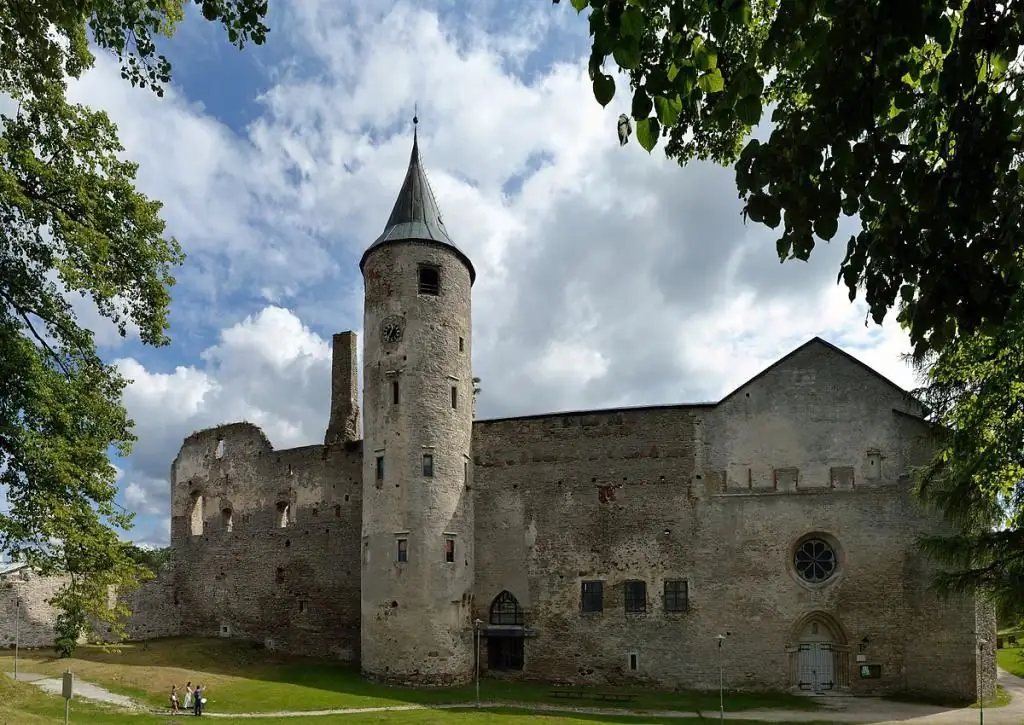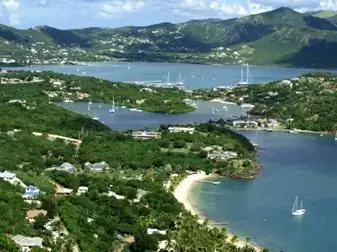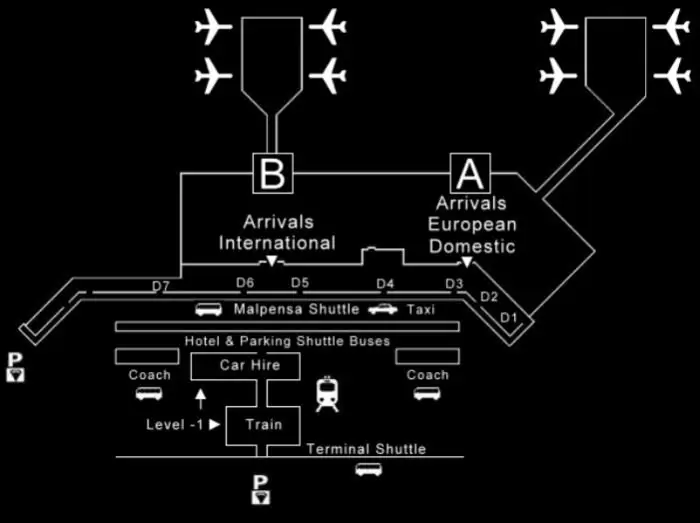- Author Harold Hamphrey [email protected].
- Public 2023-12-17 10:06.
- Last modified 2025-01-24 11:10.
Bolshaya Dmitrovka is one of the first streets in Moscow. She gained fame back in the fourteenth century as a major trade route to Dmitrov, the city closest to the Volga, in which the river port was located. Currently, the street is located on the territory of the Central Administrative District of the capital.

Formation of a settlement
Sloboda on both sides of the road to Dmitrov began to form in the XIV century. The bulk of the population were artisans and merchants. Sloboda began to be called Dmitrovskaya, since most of its inhabitants came from the city of the same name.
XVI-XVII centuries
In the sixteenth and seventeenth centuries, people from Dmitrovskaya Sloboda were resettled away from the Kremlin. The goal was the liberation of profitable territories for the local nobility. As the city developed, the settlement had to move even further along the road. The newly settled territories began to be called Malaya Dmitrovskaya Sloboda.

XVIII century
In the middle of the eighteenth century, everyonesettlements were considered streets and had the same names as today - Bolshaya Dmitrovka, Malaya Dmitrovka, Novoslobodskaya street.
Court officials settled freely and widely: courtyards occupied entire blocks, houses were surrounded by outbuildings, vegetable gardens and orchards. It was possible to walk along the street-road to the earthen rampart, which ran along the line of modern boulevards. The Dmitrovsky gates were made in it so that the street would go further. When the construction of the brick walls of the White City began on the site of this rampart, the aforementioned gates were not envisaged. This is believed to have been for security reasons. The gate, as you know, is the most vulnerable point of the fortress. Thus, Bolshaya Dmitrovka began to be blocked by a wall. The natural direction of the road was disrupted.

History of House 1
In the seventeenth century, on the site where the building of the Noble Assembly was located, Volynsky's estate flaunted. The estate remained with the heirs of this boyar until the end of the 18th century. Then house number 1 passed to the governor-general of the capital Dolgoruky-Krymsky - the prince, who married the daughter of the boyar Volynsky. In 1782, three and a half hundred square sazhens of courtyards were added to the existing buildings, adjoining the burnt St. George Monastery. In the same year, the well-known Column Hall of the House of Trade Unions was erected for the new owner. The author of the project was the architect Kazakov. At the end of the era of noble courts, the building of the Noble Assembly began to serve as a placeholding concerts. Almost all world celebrities have visited the stage of this hall.
St. Bolshaya Dmitrovka is the location of many historical monuments of the capital. Among them is the House of Trade Unions. This building, which is an example of classical architecture, was erected in the eighteenth century. The old estate still bears the status of a historical pearl of Moscow, and all thanks to the efforts of the builders, the talent of the architect and the reverent care for this wonderful building. This building is under state protection as an architectural monument.

House 2
Bolshaya Dmitrovka Street was the residence of the princes Cherkassky. Representatives of this large and noble family lived in house number 2 until the beginning of the seventeenth century. In 1821 the building was reconstructed. In 1869, meetings of the Artistic Circle began to be held within its walls. Members of the latter were not only famous artists. It was visited by Ostrovsky, Tchaikovsky, Pisemsky.
The fate of other buildings
On the street. Bolshaya Dmitrovka had many large courtyards that belonged to the princes Vyazemsky and Kozlovsky, the boyars Streshnev, S altykov, Buturlin, Sheremetyev and others. In the eighteenth century, they occupied almost the entire street, gradually replacing the houses of representatives of other classes. The only exception was the church reckoning. The most extensive estate, extending its possessions up to the street. Tverskoy, belonged to the S altykovs. The main building at number 17 is now occupied by the Nemirovich-Danchenko Theater andStanislavsky. Previously, a beautiful garden was laid out behind the house, occupying almost an entire block.

Building number six
The first owners of the house were the princes Shcherbatov, then he passed to the Solodovnikovs (merchants). With the direct participation of the latter, at the dawn of the twentieth century, the building at ul. Bolshaya Dmitrovka, 6. The Operetta Theater, organized within the walls of the renovated building, still pleases connoisseurs of beauty. The most modern sound and lighting equipment was harmoniously placed in a classic, cozy and beautiful hall.
Art Library on Bolshaya Dmitrovka
The Russian State Art Library is called an invaluable repository of treasures of Russian art and culture, as well as the country's leading scientific and information institution. The formation of the architectural appearance of this building took place in the eighteenth-nineteenth centuries. The building is an example of mature classicism. Its facade has survived to this day with minimal changes. At various times, the estate was owned by N. E. Myasoedov and F. A. Tolstoy. The latter possessed the richest collection of Slavic-Russian early printed books and manuscripts, which in 1820 he sold to the public library of St. Petersburg. Shortly thereafter, the house itself went under the hammer. From the beginning of the 1830s, he was registered with the Directorate of the Imperial Theaters. Later, the capital's theater school also moved to this building. In order to expand, two more buildings were erected in the courtyard of the house and a dance hall was equipped. Students lived at the schooland teachers.

Currently, the interior decoration of the first half of the nineteenth century, partially preserved in the building to this day, is under special protection.
Bolshaya Dmitrovka, 26
The Federation Council has been located at this address since 1994. The complex of buildings appeared in 1983. The architects Sverdlovsky and Pokrovsky worked on a responsible project. The left building stretching along the street was subsequently rebuilt. The right one was rebuilt from a pre-existing structure. Initially, O. P. Leve lived in this building. The construction of the house was carried out in 1884-1885. according to the Zykov project. In 1934-1937. it was refaced in accordance with the then fashionable trend of constructivism.
Twentieth century
In the early 1920s, Bolshaya Dmitrovka briefly became Eugene Pottier Street, the author of The Internationale and an active participant in the Paris Commune. In 1937 it was renamed Pushkinskaya. This was due to the centenary of the death of the great poet. It was not until 1994 that the street was finally given back its historical name.

The work on the arrangement of the pedestrian zone on Bolshaya Dmitrovka was completed in September 2013. Its length is just under one kilometer (900 m). In the process of beautifying the streets, the facades of thirty-seven buildings were put in order, signs and billboards that were not suitable in size were dismantled. The old street lights were removed, in their place new ones appeared, not connected to each other by wires -constrictions. In addition, more than one hundred outdoor sofas and granite benches were installed, as well as 180 flower girls and 71 urns.
Conclusion
Bolshaya Dmitrovka is the most famous metropolitan street. It is now almost entirely pedestrianized. Muscovites and guests of the city are very fond of walking along buildings that have absorbed the spirit of more than one era.






